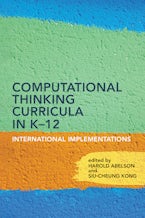With characteristic brilliance, Turkle reminds us of the power of artifacts that change lives that go on to change the world. After reading this book, you will never look at a cherished old toy—or scientific discovery—in the same way again.
Paul Saffo
Technology Forecaster
We live in the era of big science, with teams of hundreds of scientists poring over data on computer screens. In this sparkling collection, gifted students and world-class scientists remind us of the irreplaceable role of tangible objects, sensory impressions, and powerful experiences in the formation of the scientist.
Howard Gardner, Hobbs Professor of Cognition and Education, Harvard Graduate School of Education
'No ideas but in things,' wrote the poet William Carlos Williams. Sherry Turkle's eloquent and inspiring book brings the poet's insight to life. She shows us the things-to-think-with that brought generations of scientists to their vocations. Just as a butterfly may spark a hurricane, as wires and sockets brought a ten-year-old Richard Feynman to physics, objects spark the curiosity of young scientists. In an age when science education is in crisis, this splendid book offers us new insight about bringing young people into science. By looking at objects we see, in Turkle's terms, the connection between 'science, technology, and love.'
Ray Kurzweil, Inventor, and author of The Singularity Is Near: When Humans Transcend Biology
In the knowledge economy of the 21st century, a solid grounding in science and math is essential for our graduates to successfully compete in the global marketplace. The essays in Falling for Science deftly portray the impact that interaction with everyday objects—a cardboard box, a stop sign, or a ring of keys—can have on the cultivation of a lifelong passion for scientific discovery, a passion that led many of the essayists into careers devoted to finding solutions to the world's most pressing problems.
Lou Anna K. Simon, President, Michigan State University
Turkle's thought-provoking collection represents an admirable invitation to further exploration of science and human sensibility, of the mysterious web of human choice and feeling.
American Scientist












